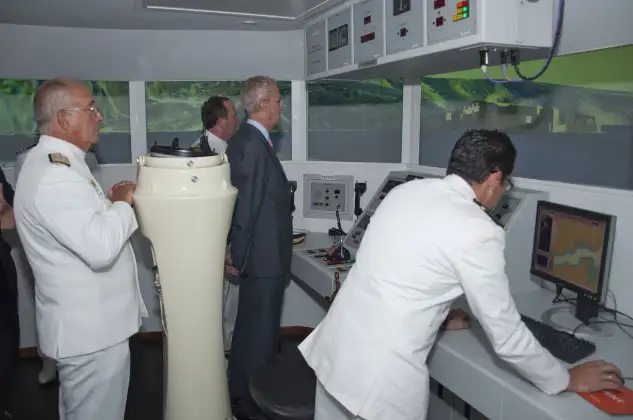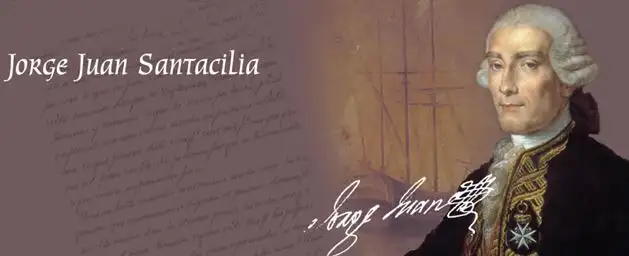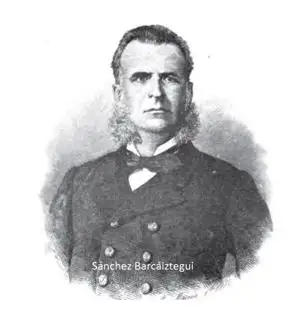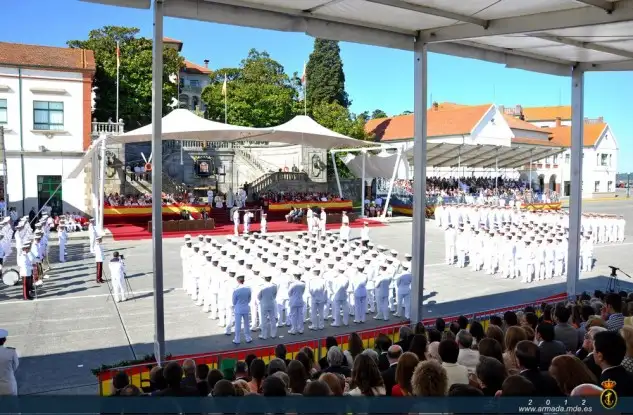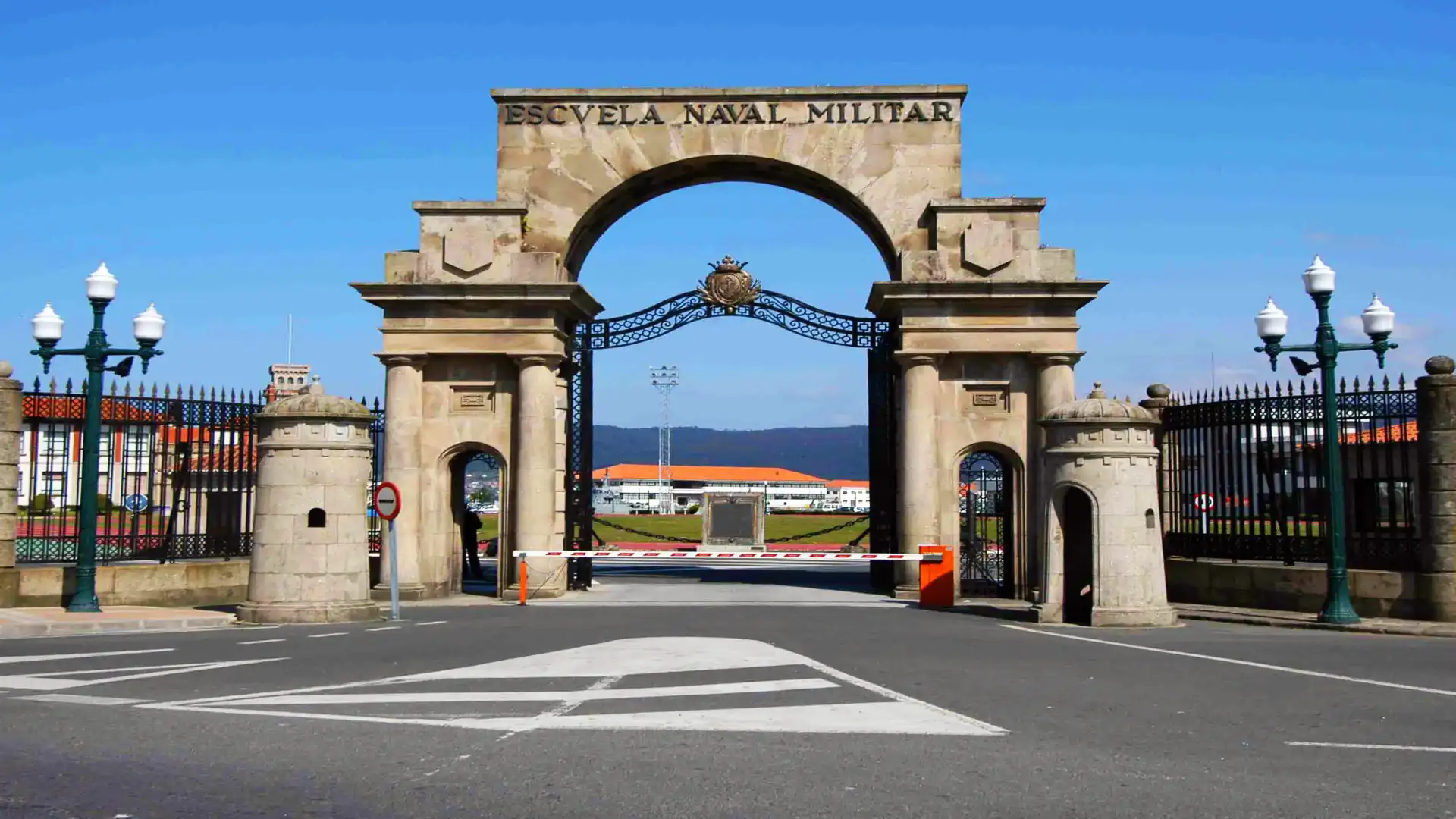
The Military Naval School, the command lung of the Spanish Navy.
The Military Naval School, the command lung of the Spanish Navy.
Once the War of Succession was over, the new King Philip V was fully aware of the decisive role that both Spain and the Royal Hacienda themselves played in the overseas possessions and the commercial traffic they generated with the Peninsula.
But a navy is not only made up of ships, but also requires capable and prepared men to lead it. Until then there was no specific centre for the formation of the officers and they came from the College of Pilots of San Telmo in Seville or from the cadets of Galeras of Cartagena.
To maintain these possessions and protect the ultra-amarine trade, a powerful army was needed, from which Spain lacked at the beginning of the 18th century. Hence the ambitious shipbuilding plans that were planned during this century
To cover this vacuum, José Patiño founded in 1717 in Cadiz the Academy of Marine Guards, promoting a teaching that merged the French model, essentially theoretical, and the English, eminently practical. The future guardians were required to belong to the nobility. It was also necessary to pass an examination of the four rules and not to exceed the age of 18, although the latter requirement was observed on more than one occasion. For those who did not come from nobility, but had an important experience as sailors, there was the possibility of entry as adventurers. So did Antonio de Ulloa. This route was abolished in 1824 and the requirement of nobility ten years later.
The curriculum included a theoretical part at the Academy and a practical part on ships. Algebra, Geometry, Aritmetics, Trigonometry, Cosmography, Nautics, Artillery, Fortification, Armament, Naval Construction, Maniwork, Fencing, Music and Dance were studied.
In 1751 he was appointed captain of the Jorge Juan Marine Guards Company, then the ship captain, who promoted the creation of the Royal Observatory of the Navy, considering it indispensable for the formation of the guards. In 1769 the Academy moved to the island of León.
In 1776, the Academy of Marine Guards was established in Ferrol and Cartagena, subordinate to that of Cadiz. Both were suppressed in 1824, as they were considered superfluous and too expensive, only the one of Cadiz being preserved.
In 1825 the Academy is transferred again, this time to the Arsenal de la Carraca, with the name of Royal Military College of Knights Marine Guards. Due to the serious difficulties of the Treasury, the College was closed in 1828. In 1831, it was arranged that the guards should form in the frigate Pearl and the Sovereign vessel.
In 1844, a decision was made to establish a Military Naval College in San Carlos, in front of the Arsenal de la Carraca. It will be opened on 1 January 1845.
To enter the College, a certificate of good health was required and blood cleaning was credited, but not the nobility, a requirement that had been abolished in 1834. The age of income ranged from 11 to 17 years. It was necessary to be admitted to pass an examination where sufficient knowledge of mathematics, grammar, religion, geography, history, drawing, French and English had to be demonstrated.
In 1867, the College of San Carlos was closed, due to the difficulties of the organization and because it considered the number of the guards to be excessive.
Two years later, the Minister of the Navy, Juan Bautista Topete, established the floating Naval School in the frigate Asturias, pontoon in Ferrol.
The Floating Naval School was active until 1907, when the entrance to the Naval School was abolished until new order.
With the Escuadra Act of 1908 in Ferrádiz, the return of the Naval School to San Fernando was decided, and was inaugurated in 1913. In 1928, the school ship Juan Sebastián de Elcano was handed over for the students to carry out the navigation practices.
During the Civil War at the school, courses were given to officers of the Naval Reserve and to temporary Navy Ensign. In the Republican area, the People's Naval School was created in Cartagena, from which two promotions of officers came out.
In 1938 it was decided to transfer the Naval School to Marín, due to the appropriate conditions of the river for the practices of navigation. At the end of the war, works began at the School of Naval Tyre, which would eventually become the current Military Naval School, opened on August 15, 1943.
© 2024 Nautica Digital Europe - www.nauticadigital.eu



